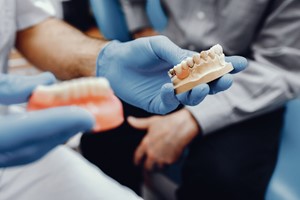Stryker, a prominent name in medical technology, has introduced Prophecy Footprint, a new addition to its Prophecy Surgical Planning platform, designed to cater specifically to foot and ankle surgeries, including complex procedures like total ankle replacement. This development marks a significant advancement in addressing the challenges often encountered in traditional surgical planning methods.
Traditional surgical planning tends to focus narrowly on the targeted joint, often overlooking potential issues in surrounding areas. However, with approximately 70% of patients requiring additional procedures during total ankle replacement, a more comprehensive approach becomes imperative. Prophecy Footprint seeks to bridge this gap by offering a more holistic perspective on surgical planning.
One of the key features of Prophecy Footprint is its ability to provide detailed 3D visualizations of the entire foot and ankle, enabling surgeons to assess potential complications beyond the primary joint of concern. By offering insights into ancillary procedures that may be necessary alongside the primary surgery, this system facilitates the creation of a more comprehensive treatment plan tailored to each patient's unique anatomy and potential complications.
The significance of this enhanced planning cannot be overstated. By providing surgeons with a more complete picture, Prophecy Footprint aims to improve the overall surgical planning experience. Moreover, by addressing hidden issues and tailoring the surgery to individual patient needs, it has the potential to lead to better clinical outcomes. Additionally, the system may help reduce surgery time and costs by avoiding unnecessary procedures or complications during surgery.
Prophecy Footprint is part of a broader category of surgical planning systems that are increasingly being utilized in orthopedic surgery, particularly for complex procedures like joint replacements. These systems leverage medical imaging data, such as X-rays, CT scans, and MRIs, to create detailed 3D models of the surgical area. This allows surgeons to visualize the anatomy in detail, plan the surgical approach, predict potential risks and complications, and create customized surgical guides for improved accuracy during surgery.
https://www.businesswire.com/













